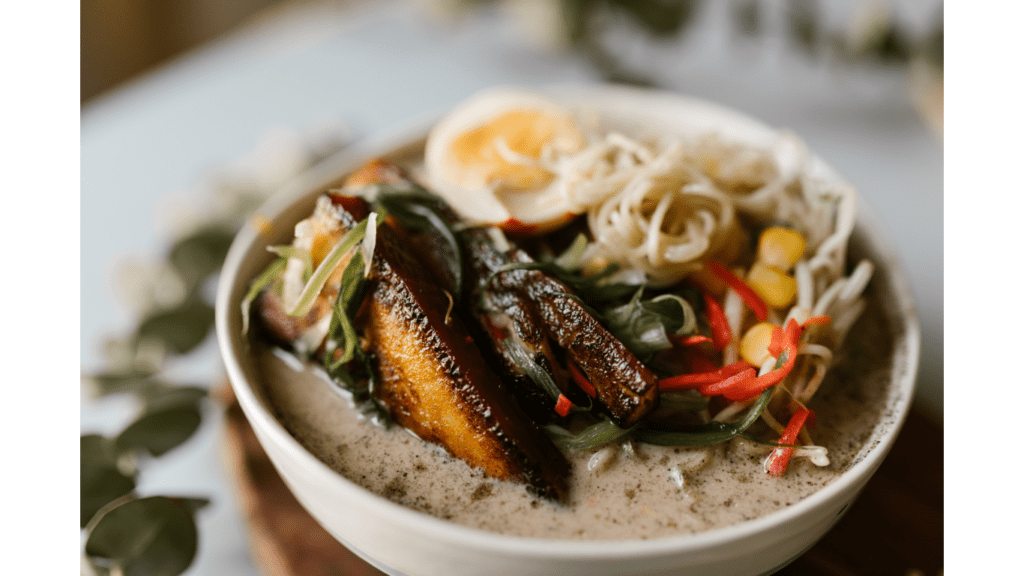Embarking on Foodie Adventures: A Global Quest
The Lure of International Flavors
- Exploring international flavors is a tantalizing journey through diverse culinary landscapes. Each destination I visit unveils a symphony of tastes, textures, and aromas that showcase the unique essence of their local cuisine. From the fiery spices of India to the delicate sushi in Japan, every dish tells a story steeped in tradition and innovation.
- Whether indulging in a hearty paella in Spain or savoring authentic pad Thai in Thailand, the experience of tasting global flavors transcends mere sustenance; it’s a celebration of cultural heritage and culinary artistry. As I immerse myself in the vibrant markets and cozy eateries around the world, I discover that food is not just nourishment but a gateway to understanding the soul of a place.
The Cultural Significance of Cuisine
Cuisine is more than just food; it’s a reflection of history, beliefs, and values ingrained in a society. As I delve into the culinary traditions of different countries, I unravel the intricate tapestry of cultural significance woven into each dish. The spices used, cooking methods employed, and dining rituals practiced all offer profound insights into the identity of a community.
Through food, I gain a deeper appreciation for the rich tapestry of human diversity, realizing that a shared meal can bridge gaps, foster connections, and spark conversations beyond language barriers. Whether it’s bonding over a traditional tea ceremony in China or sharing a communal barbecue in Argentina, the universal language of food unites us in a global gastronomic experience like no other.
Planning Your Culinary Journey
Researching Destinations Through Their Dishes
- When preparing for my culinary adventure, I immerse myself in the flavors and stories of each destination through its signature dishes. Researching local delicacies online, reading food blogs, and watching documentaries on regional cuisine helps me understand the essence of a place before even setting foot there. This preliminary exploration excites my taste buds and builds anticipation for the diverse culinary experiences awaiting me.
Mapping Out Itineraries for Taste
- Crafting detailed itineraries focused on food exploration is key to maximizing my culinary journey. I prioritize visiting renowned food markets, street food stalls, and traditional eateries to savor authentic flavors. By mapping out my daily meals around must-try dishes and local specialties, I ensure a balanced gastronomic experience that captures the essence of each destination’s culinary identity. Flexibility in the itinerary allows for spontaneous culinary discoveries and unplanned delights along the way.
The Tastes of Europe: Old Continents, New Discoveries
Savoring the Classics: France and Italy
Exploring the culinary scenes of France and Italy is a journey through time-honored traditions and exquisite flavors. In France, I indulged in the rich buttery croissants of Paris, sipped on fine Bordeaux wines in Bordeaux, and savored Coq au Vin in a cozy bistro in the Provence region. Each bite was a tribute to French gastronomy’s elegance and depth.
Italy captivated me with its authentic pasta dishes, wood-fired pizzas, and creamy gelato. From the streets of Rome to the canals of Venice, I immersed myself in the fragrant aromas of basil, tomatoes, and olive oil. Dining in a family-run trattoria in Tuscany, I appreciated the simplicity and quality of Italian cuisine.
Hidden Gems: Unexplored Corners of European Cuisine
European cuisine goes beyond the well-known French and Italian delicacies, offering hidden gems waiting to be discovered. In Portugal, I sampled the iconic Pastel de Nata, a custard tart sprinkled with cinnamon, and explored the seafood delights of Bacalhau dishes. The fusion of sweet and savory flavors left a lasting impression on my taste buds.
Heading east to Hungary, I found comfort in Goulash, a hearty stew packed with paprika-infused goodness, and relished the sweetness of Chimney Cakes, a popular Hungarian pastry. These lesser-known delights revealed the diverse and intricate layers of European culinary heritage.
Asian Delicacies: Fusion of Traditional and Modern

Street Food Wonders: Thailand and Vietnam
Exploring the vibrant street food scenes in Thailand and Vietnam is a sensory delight. In Bangkok, the bustling capital of Thailand, I immerse myself in the aromatic flavors of dishes like Pad Thai, Som Tum, and Mango Sticky Rice. These iconic street foods capture the essence of Thai cuisine with their perfect blend of sweet, sour, spicy, and savory flavors. Moving on to Vietnam, the bustling streets of Hanoi and Ho Chi Minh City offer a tantalizing array of street food options. From the famous Pho to Banh Mi sandwiches and fresh spring rolls, each bite tells a story of tradition and innovation in Vietnamese culinary culture.
High-End Treats: Japan’s Culinary Innovations
Delving into the world of high-end dining in Japan unveils a realm of culinary artistry and innovation. In Tokyo, the culinary capital of Japan, I embark on a gastronomic journey through Michelin-starred restaurants and traditional Kaiseki establishments. The meticulous presentation of dishes like Sushi, Sashimi, and Wagyu Beef reflects Japan’s dedication to perfection and attention to detail. From the precision of knife skills to the harmony of flavors in each bite, Japanese cuisine epitomizes the marriage of tradition and modernity, creating an unforgettable dining experience that transcends taste to become a true culinary masterpiece.
The Americas: A Melting Pot of Ingredients
The Spicy Trails of Mexico
Exploring the culinary landscape of Mexico unveils a tapestry of bold flavors and vibrant spices that have tantalized taste buds for centuries. From savory tacos filled with tender meats to zesty salsas made with ripe tomatoes and fiery chilies, Mexican cuisine is a celebration of spice and depth. Strolling through bustling markets in Mexico City or Oaxaca, one can savor the aromas of freshly-made tortillas and the rich scent of slow-cooked mole poblano, a complex sauce blending chocolate and chili peppers. Each bite tells a story of indigenous traditions and Spanish influences, creating a perfect harmony of flavors that dance on the palate.
Farm-to-Table: The American Food Revolution
In the heart of the Americas, the farm-to-table movement has revolutionized the culinary scene, emphasizing sustainability, freshness, and local produce. From the fertile fields of California’s Napa Valley to the bustling urban gardens of New York City, chefs across the United States have embraced a return to simplicity and quality. Here, I explore how this movement has transformed traditional American dishes, with seasonal ingredients taking the spotlight in dishes like farm-fresh salads bursting with heirloom tomatoes and artisanal cheeses. By supporting local farmers and producers, the farm-to-table philosophy not only ensures the traceability of ingredients but also promotes a deeper connection to the land and the community.
Food and Technology: Enhancing the Culinary Experience
1. Apps and Platforms for Foodie Adventures
Exploring culinary delights around the globe has become more accessible and exciting with the rise of innovative apps and platforms dedicated to food experiences. From discovering hidden gem restaurants to learning about traditional cooking methods, these digital tools enhance every foodie’s adventure.
I’ve personally found apps like “Foodie Finds” incredibly useful during my travels. This app curates local food treasures recommended by fellow food enthusiasts, ensuring that every meal is a memorable experience. Additionally, platforms such as “EatWise” provide valuable insights into dietary preferences and ingredient origins, catering to a wide range of culinary interests.
Whether you’re a seasoned food explorer or a novice looking to dive into new flavors, leveraging these apps and platforms can elevate your gastronomic journey to new heights.
2. Social Media Influences on Eating Trends
In today’s digital age, social media plays a significant role in shaping eating trends and influencing dining choices around the world. Platforms like Instagram and TikTok have revolutionized how we interact with food, turning meals into visual spectacles that engage and inspire audiences globally.
Personally, I’ve noticed the impact of social media on my own dining preferences, with stunning food posts often prompting me to try new dishes and visit trending restaurants. The power of influencers and food bloggers in recommending must-try foods has made exploring culinary delights a social experience, connecting foodies from diverse backgrounds through a shared love for food.
As social media continues to evolve, its influence on eating trends will only grow, making it an integral part of modern food culture and exploration.
Local vs. Global: Sustainability in Food Tourism
Supporting Local Communities
In my travels around the globe exploring culinary delights, I’ve always made it a point to support local communities wherever I go. Engaging with local food vendors, markets, and eateries not only enriches my gastronomic experience but also contributes directly to the sustainability of the destinations I visit. By choosing to enjoy locally sourced ingredients and dishes, I’m not only savoring authentic flavors but also investing in the livelihoods of the people who lovingly prepare these culinary delights. This symbiotic relationship between food tourism and local communities not only preserves cultural traditions but also fosters economic growth in these regions.
The Impact of Food Tourism on the Environment
One aspect that constantly resonates with me as a food enthusiast is the impact of food tourism on the environment. The choices I make as a traveler can significantly influence the ecological footprint of my culinary adventures. Opting for sustainable practices such as reducing food waste, supporting organic and fair-trade products, and choosing eco-friendly dining establishments are crucial steps in minimizing the environmental impact of my food explorations. I’m mindful of the resources consumed in the production and transportation of the foods I enjoy, and strive to make responsible decisions that promote environmental conservation. As I indulge in diverse culinary experiences around the world, I’m acutely aware of the imperative to prioritize sustainability and minimize my ecological footprint to preserve the planet for future generations.


